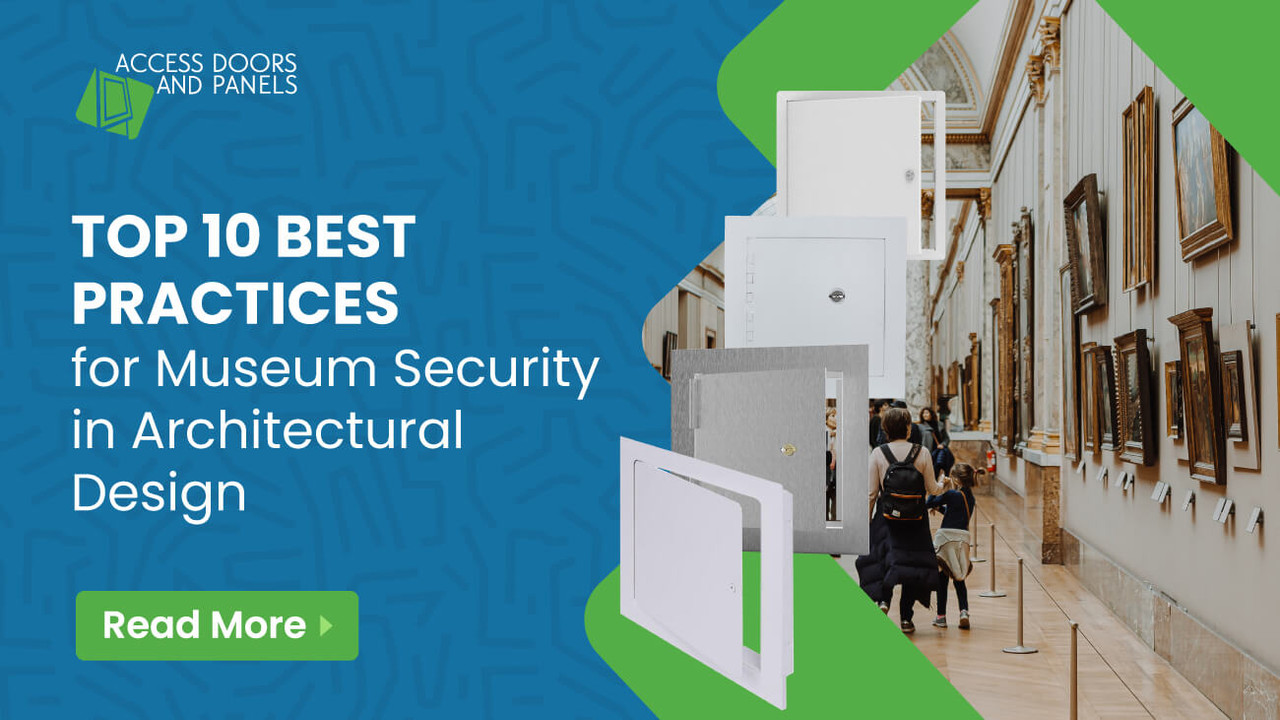Top 10 Best Practices for Museum Security in Architectural Design
Posted by Access Doors and Panels on 5th Jul 2023
Like sanctuaries of knowledge, museums hold abundant prized treasures within their walls, attracting visitors from across the globe. However, behind the scenes, museum curators, architects, and security teams work tirelessly to safe-keep these valuable collections, employing the most up-to-date technology and strategic planning.
Security specialists and the museum building's architects place a web of safety systems around the establishment to outsmart even the most cunning intruder. Surveillance cameras keep a watchful eye on every corner, their lenses skimming for any signs of suspicious movements. Like invisible sentinels, motion sensors detect even the faintest indication, activating alarms that echo through the halls.
However, it's not just the physical barriers that pose a challenge. Museum security and architects must also navigate the delicate balance between accessibility and protection. Below are the top 10 best practices for safeguarding art gallery and museum architectural designs:
#1: Controlling Access Points
Reputable professionals developed the museum's architecture to allow controlled access points, such as a single main entrance and exit. It helps ensure that visitors can be meticulously screened, monitored, and accounted for, lessening the risk of unauthorized entry.
#2: Concealing Building Components
Furthermore, they often also include secure and reliable access doors that can boost safety around the area. Here are some of the most trusted security access door and panel brands by architects:
- Milcor Security Access Door: The Milcor 3211 Security Access Doors are popular among architecture professionals for their ability to increase museum protection and maintain their architectural design simultaneously.
- Cendrex MDS Medium Security Panel: The Cendrex MDS Medium Security Panel is a favorite choice if architects aim to install and strengthen the gallery's security access with a non-rated flush access door.
- Acudor MS-7000 Medium Security Access Door: If the architect is looking for architecturally pleasing rounded edges that provide average security around the museum area, the Acudor MS-7000 Medium Security Access Door is their go-to safety component.
- Acudor SD-6000 High-Security Access Door: On the other hand, if the museum space requires the utmost protection, architects always opt to install the Acudor SD-6000 High-Security Access Door.
#3: Protecting the Perimeter
Architects implement a robust perimeter protection system, such as fencing, barriers, and landscaping elements that deter unauthorized access. It helps create a clear boundary between public areas and restricted zones, making it more challenging for potential intruders to breach security.
#4: Securing Entrances and Exits
Architects usually plan entrance and exit points with security in mind. They often attach access control systems in sturdy doors, like swipe cards or biometric scanners, to discourage unauthorized entry. They also often consider incorporating features like airlocks or double-door systems to minimize the risk of tailgating.
#5: Enhancing Visibility with Lighting
Architects enhance visibility throughout the museum by utilizing ample lighting. Well-lit areas lower the chances of concealment, making monitoring visitors effortless for security personnel. Strategic placement of lighting components can also optimize the aesthetic appeal of the exhibits.
#6: Adding Monitoring and Surveillance Systems
Architects incorporate comprehensive video surveillance systems throughout the museum, covering critical areas such as galleries, entrances, exits, and storage rooms. They mostly use high-resolution cameras with digital recording capabilities, guaranteeing that footage is clearly captured and stored securely for future reference.
#7: Installing Effective Alarm Systems
Architects plan to install an effective alarm system that includes intrusion detection sensors, motion detectors, glass break sensors, and panic buttons. They often integrate with the museum's security operations center and can alert guards promptly in case of any security breach.
#8: Using Technology to Restrict Access
Architects design the museum building to execute an efficient access control system to restrict entry to sensitive areas, like storage rooms, vaults, and administrative offices. It may also contain proximity cards, biometric readers, or keypad entry systems, encouraging authorized personnel to reach specific areas based on their roles and permissions.
#9: Securing Display Cases
Architects also design display cases in the museum with security features such as shatter-resistant glass, tamper-proof locks, and alarm sensors to boost the building's protection. They ensure that the cases get securely anchored to avoid unauthorized removal or damage to artifacts.
#10: Security Planning and Training
Part of the architects' security planning is marking emergency exits throughout the museum and evacuation plans and procedures. Museum management is also encouraged to conduct routine drills to familiarize staff and visitors with emergency protocols, securing a swift and orderly response once fire, natural disasters, or other emergencies occur.
Work with Access Doors and Panels for Museum Security and Access Needs!
Access Doors and Panels is your best source for finding suitable products to satisfy the ideal museum security and access demands. Explore our best sellers page to discover more of our top-notch models' most sought-after safety features boosting your property's protection and lasting value.
Try our quiz to help you get started!

